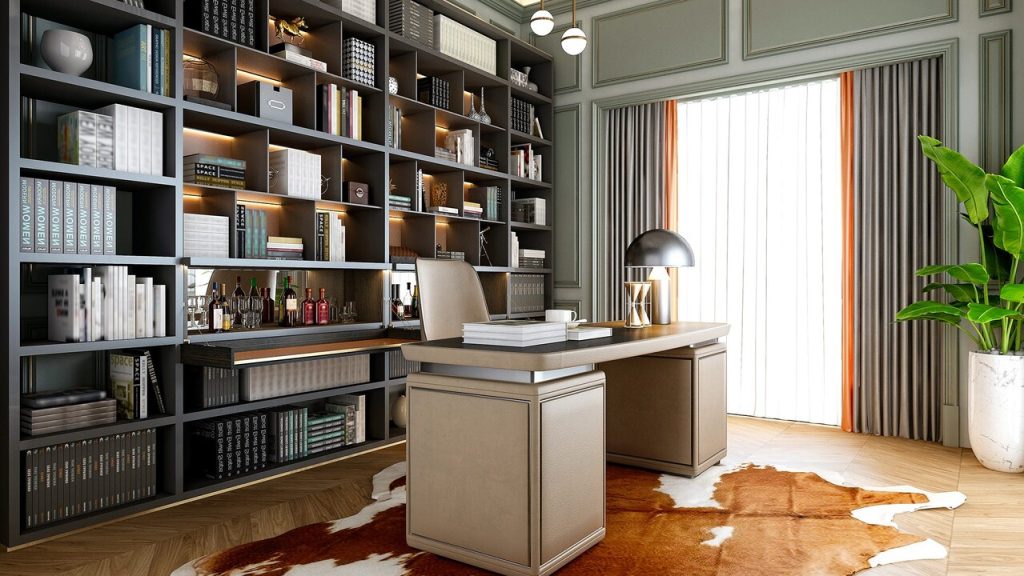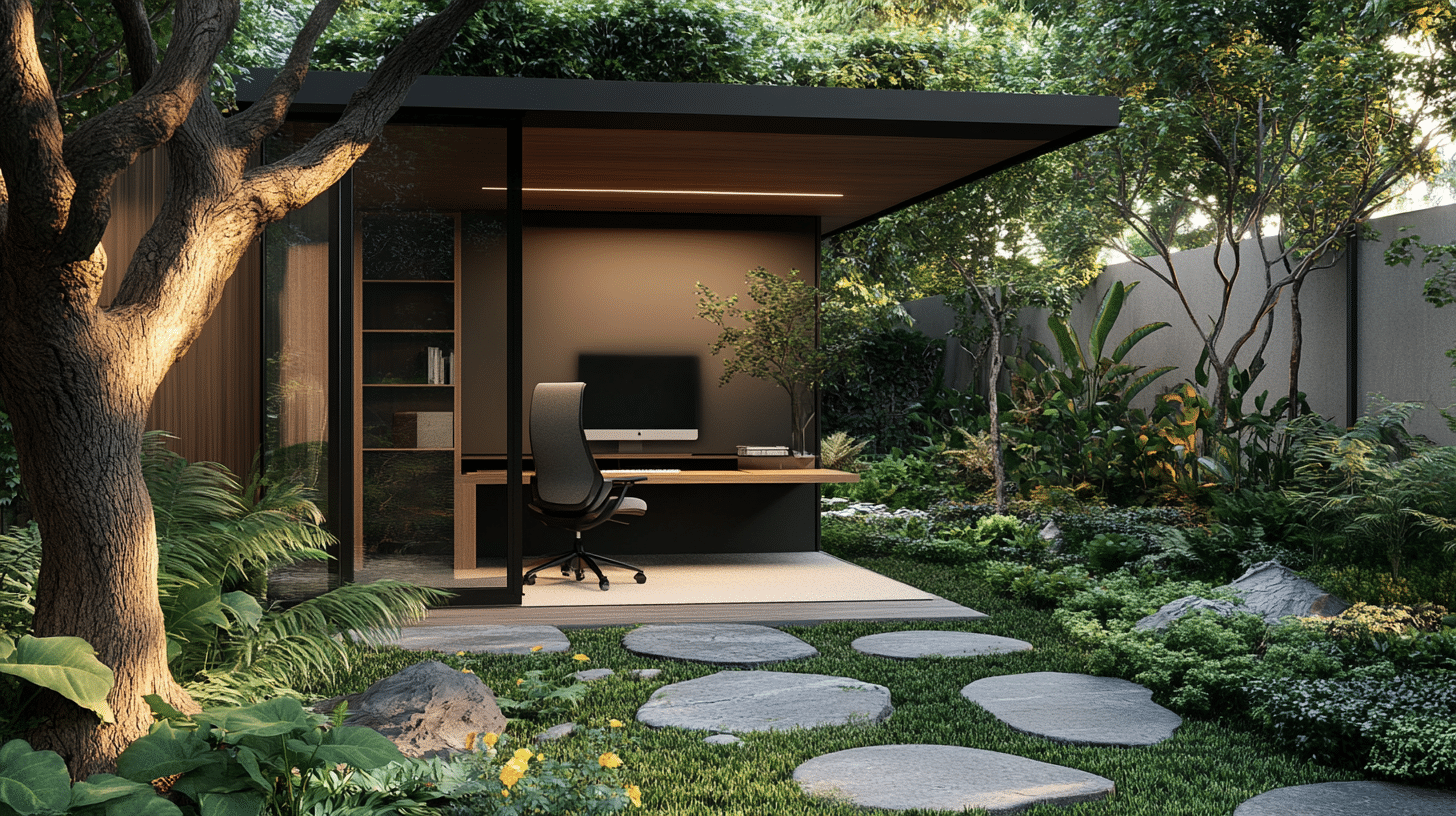How to Create a Tranquil Home Office for Telehealth
When setting up a serene home office for telehealth services, aim to make it calm and inviting. It will display your professionalism and cultivate patient trust. As you work on the space’s aesthetics, focus also on functionality.
With the right action plans, you can take your telehealth sessions to the next level of quality by turning your home office into an oasis with thought-through design and innovative technology integration. Following are a few tips for designing a home office space, one that encourages relaxation while allowing one to support effective virtual practice.
Use Calming Colors

The colors you choose to paint your home office can influence your mood and productivity. With color psychology, some shades rank high as soothing, enabling one to concentrate well. They become ideal for health facilities.
Soft blues, greens, and neutral shades, such as beige or light gray, are calming. These colors also prevent stress and anxiety for you and your patients, giving peace during the virtual consultation.
It would bring more serenity into the setting if the soothing hues were brought in with something other than paint color, such as furniture or other items like decor or art. Remember to keep your room as simple and natural as possible since too much visual noise often crowds out all possibility of serenity.
Use Natural Light
Natural light helps improve mood, enhance energy, and reduce eye strain, all critical factors when one is involved in telehealth sessions. Put your desk near a window and take advantage of natural light during the day, or use sheers so that light can filter in while you maintain the privacy needed for your sessions.
When this is impossible on your premises, look for daylight lamps. These light up the space with the same brilliance and warmth as provided by natural light, which helps create a soothing environment. Good lighting shall keep you charged and give a professional and well-lit setup for your video calls to make transparent exchange possible with your patients.
Prioritize Ergonomic Comfort

A chair where your lumbar is supported, an adjustable desk to fit your needs, and a keyboard at the right height can help alleviate considerable strain from your body. It is easier to remain calm and focused if you are more comfortable.
This may be especially true when you have to see patient after patient virtually. Discomfort won’t build up and become a distraction.
Along with your chair and desk, consider other ergonomic accessories such as a footrest, monitor stand, and wrist support. Such efforts may be minor, but they significantly increase comfort and minimize the chances of potential strain injuries.
Create a Technology-Friendly Space with Healthcare Platforms
Advanced platforms, like the EHR system, allow for smooth management of patient data and enable easy virtual consultations. Such platforms mean organized and efficient workflow. When choosing the best ehr for psychiatry, focus on those which are user-friendly and intuitive.
This reduces stress from your end and lets you focus more on the care of your patients. A fast and reliable internet facility with a secure Wi-Fi connection should be available at your workstation.
Most importantly, invest in an updated computer system supporting telehealth software. Dual monitors could be considered for convenience in viewing patient information while making direct eye contact during virtual sessions.
Reduce Noise Distractions
External noise distractions, such as traffic, pets, or household members, can cut into the flow of a conversation and deteriorate the quality of the patient’s experience. Soundproof your home office to minimize outside distractions. You can install thick curtains, area rugs, or acoustic panels that absorb noise and make the environment more focused.
While intending to get added sound management, one may consider headphones that cancel noise or a high-quality microphone that captures only one’s voice. A device of such a nature would work to ensure loudly and clearly that your patients hear you, even with the sometimes inevitable background sounds.
Personalize Your Space
While it is essential to present a professional setting, putting a little personal touch at your home office can make the place a bit more warm and about one’s inner self. Add items with sentimental value or bring joy to you, such as family pictures, potted plants, or motivational quotes.
They will act as comforting and soothing objects during those stressful days at work.
The trick is not to go overboard with the number of items. Make your decorations minimalistic and meaningful so that your eyes will not be cluttered with unnecessary visual disturbances that will hamper your focus.
An office thoughtfully curated with elements of personality can balance out an environment in which you feel comfortable.
Integrate Relaxation Aids for Mental Clarity
Consider adding elements to your workspace that facilitate relaxation and calmness. It could be an aromatherapy diffuser with soothing scents involving lavender or eucalyptus, which will reduce stress levels and boost mental clarity.
Soft background music or nature sounds can also do wonders in setting that atmosphere of relaxation where one can let one’s hair loose.
Additionally, short respites between telehealth sessions can be used for meditation or stretching to help increase your clarity of mind and prevent burnout. As little as five minutes of mindfulness will be able to reset and refocus you for the next session to ensure that you are entirely with the patient.
Create a Clutter-Free Space
The clutter can be a source of stress and may take attention away from your responsibilities. Invest in storage solutions that help keep paperwork and office supplies organized, such as filing cabinets, shelving, or desk organizers.
A clutter-free setting clears your mind for essential tasks, allowing you to become more attentive to the needs of your patients without diversions. Besides physical organization, there is digital organization.
Store your patient records, telehealth software, and other important documents safely and accessibly. A clutter-free workspace, both physically and digitally, brings a feeling of calm and professionalism right into your telehealth practice.
Endnote
Creating a home office for telemedicine is a great idea to bridge the gap and bring services closer to the patients. During this shift, one great role is ensuring the space looks as imagined. You achieve serenity by avoiding distractions and working on the office’s aesthetic.







